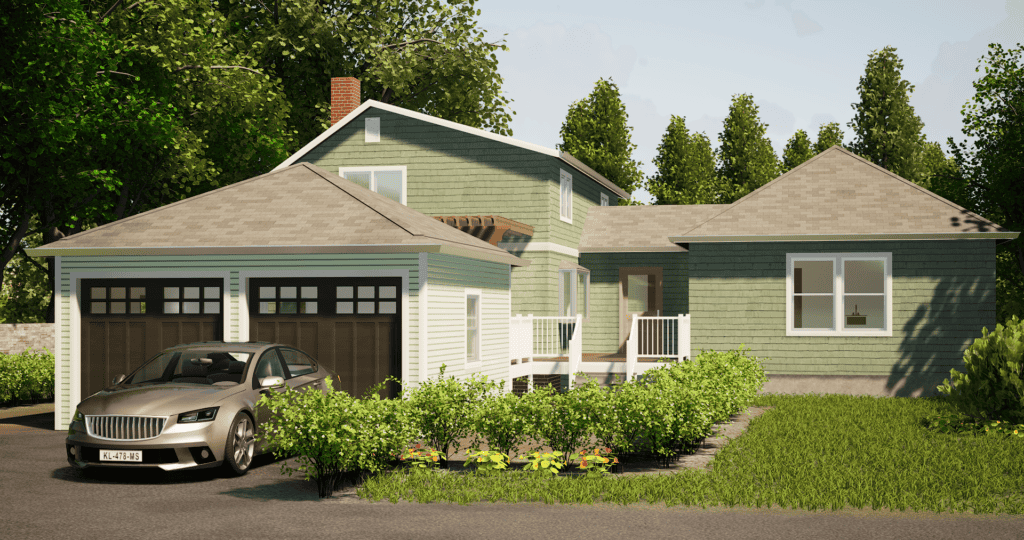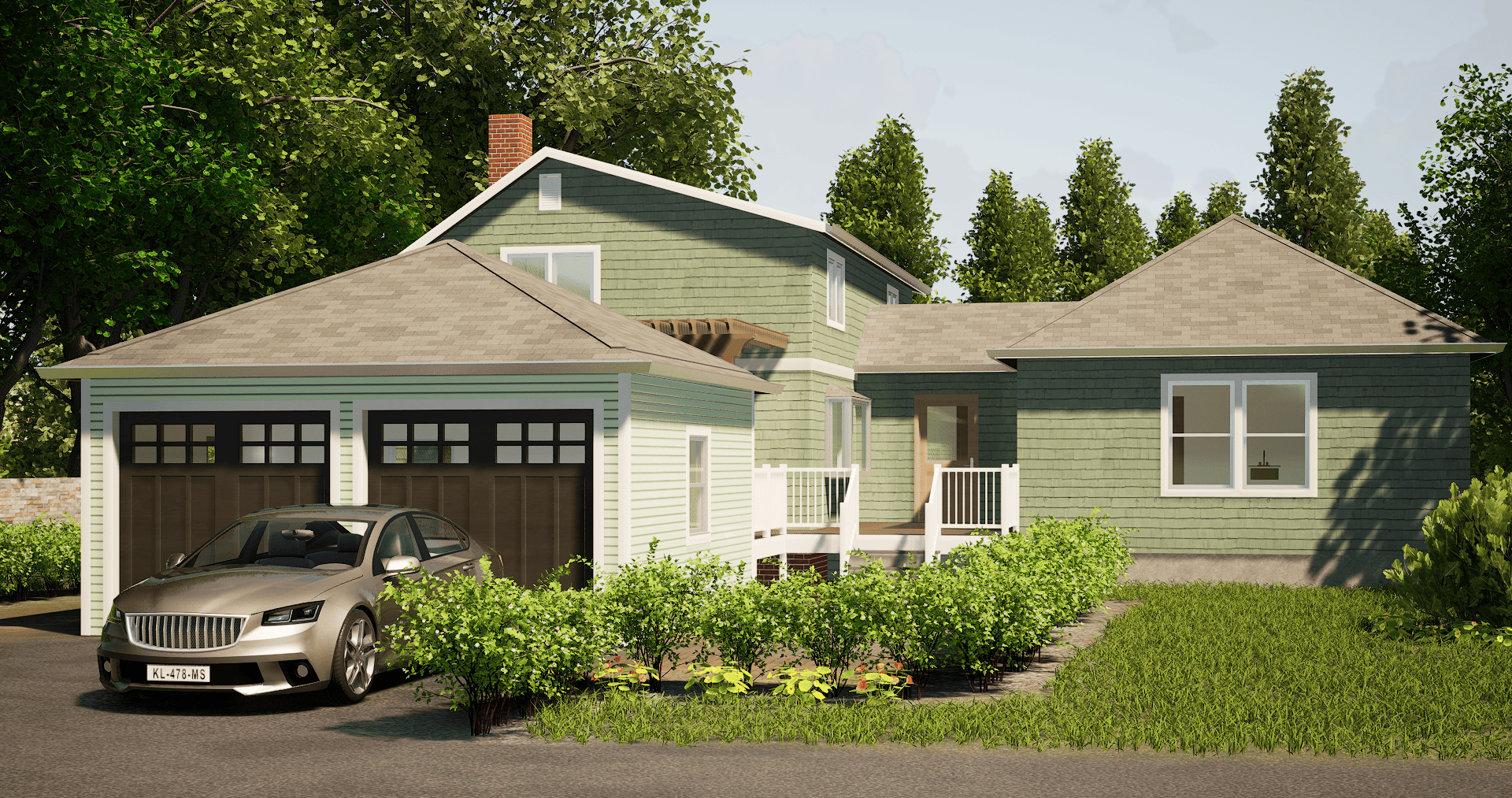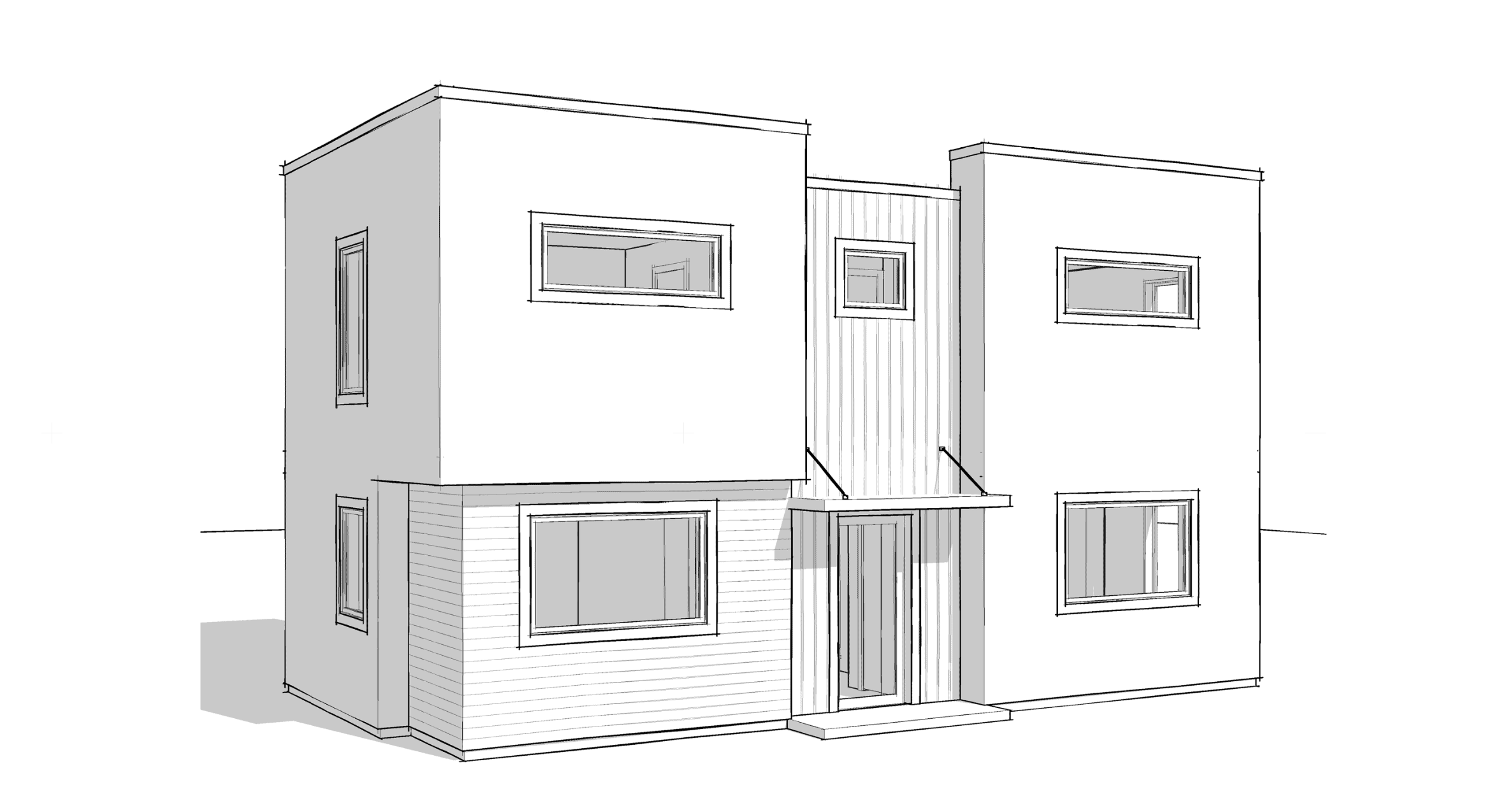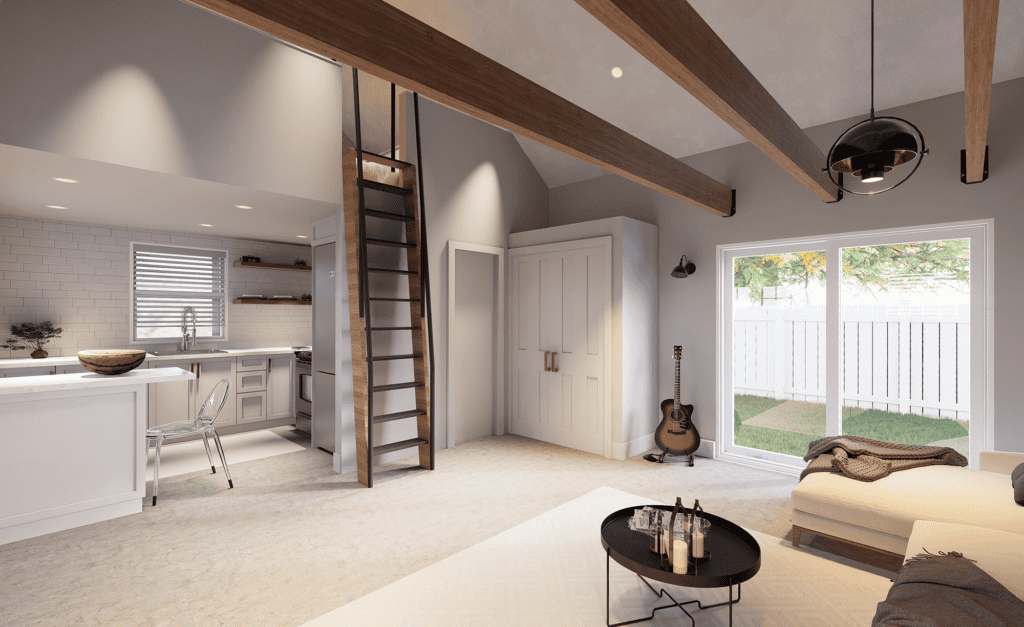Before hiring an architect to design an ADU for your property, you should have a realistic budget range in mind for construction costs, as you’ll need to plan what you can afford and how you are going to pay for it. There are many ways that you can access funding for your ADU, here are five of them:
1. Cash or Invested Assets
Whether you’ve saved up cash for just this purpose, or you have invested assets that can be liquidated, this should be considered as a funding source if you don’t want to take on any additional debt when building your ADU. If building your ADU will not create a rental income stream, avoiding debt may be the best way to go. Any cash you have in the bank is losing value every day, and quickly, due to inflation. Moving that cash into real estate equity would arguably be a better use of the funds. If your ADU will be used as a rental, or if you plan to occupy the ADU and rent out the primary residence, then taking on some debt to build the ADU may be a fine option – provided that the monthly debt payments will be LESS THAN the rental income generated. You should consult with your financial advisor to discuss these options.
2. Home Equity Loan
Depending on how much equity you own in your primary residence, you may be able to access it to fund the design and construction of your ADU. One of the ways you can access your equity is a Home Equity Loan or a HELOAN. A Home Equity Loan is a second mortgage taken out through a mortgage provider, typically a bank or a credit union. Home Equity Loans are for a fixed term and a fixed interest rate. That means that on Day 1 of the loan, you are issued a check for the full amount of the loan and you will make regular even payments amortized over the length of the term, typically anywhere from 5-20 years. The interest rates can be close to 30 year mortgage interest rates, but typically are higher for longer loan terms.
As mentioned above, depending on your income, monthly expenses and your financial goals, you may want to ensure that the monthly debt payments (both principal and interest payments) are less than the rental income generated from the ADU or primary dwelling.
When shopping for a Home Equity Loan, you can typically get all the information you need from a bank or credit union’s website. You should start by checking all of the local bank and credit union websites to view their home equity loan rates and terms. Often, the credit unions have competitive rates. Most financial institutions will offer an equity loan at 80% Loan-to-Value or LTV. In simple terms, this means that they require you keep a minimum of 20% equity in the home. To calculated how much equity you’d be able to access you’ll use the following equation:
(Your Home’s Value x 0.8) – 1st Mortgage Balance = Available Equity
After you check your local HELOAN interest rates, you can use this calculator to estimate what your monthly loan payment would be.
If you recently purchased your home, have little equity, or you just want to be able to access more of the equity, there ARE some financial institutions that will lend to 90% or even 100% LTV, meaning they allow you take MORE of your equity out of the house for the loan. It should be noted that this is considered high leverage, and higher risk. Loans over 80% LTV are going to have higher interest rates and potentially additional terms that should be considered.
Banks and Credit Unions often charge very few closing costs when taking out a Home Equity Loan, sometimes there are zero closing costs. If there are closing costs, it is typically just the cost of a home appraisal which can be roughly $300-500.
3. Home Equity Line of Credit
Much like a Home Equity Loan, the Home Equity Line of Credit (HELOC) is a tool to tap into your home equity. The key differences are that a HELOC is not a fixed term loan. It is a line of credit, much like a credit card, secured by the equity in your home. Similar to a fixed Equity Loan, most financial institutions will lend to 80% LTV, requiring you to retain 20% equity in your home. However, you only pay interest on the funds you use. So on Day 1, you will have access to the full funds, but if you don’t spend any it, you will have zero payment due. The interest rate on a HELOC is typically variable, which means that it can change throughout the year. Lenders will have different terms they offer for this variability. Typically, the interest is adjusted monthly or once per year. The rate can go up or down depending on the market. A typical variable rate may be described as “Prime – 0.51%”. The lender will say right on their website where they get their “prime” rate from. In that example they take their prime rate and subtract 0.51 to calculate your interest rate. You definitely want to shop around because you may find a lender with better terms. To compare your available options and make an informed decision, you’ll want to look at the following information:
- Introductory Interest Rate – lenders may offer an attractive interest rate for anywhere from 6-24 months and then the rate changes to their normal rate.
- Draw & Repayment Period – A typical lender will offer a 10 year “draw” period that will require interest-only minimum payments. After the draw period is over, any remaining loan balance will automatically be amortized into a 15 year principal/interest loan repayment schedule. Draw and repayment periods will vary between lenders.
- LTV – Lenders will offer a HELOC typically between 60-100% LTV depending on if the property is a principal residence or investment property. Not every lender will offer a HELOC on an investment property, but plenty do if that’s what you are looking for.
- Annual Fee – Some lenders will charge an annual fee just to keep the HELOC open, much like a credit card. This fee is typically $50-100. You can usually find a lender that does not require this fee.
- Closing Costs – Some lenders may charge an application fee, or require you to pay for your home appraisal during the application process. Plenty of lenders charge zero closing costs, which is obviously more attractive.
The monthly payments for a HELOC are typically interest-only for 10-15 years. This is called the “Draw” period. During the Draw period, the minimum payment due is NOT going to include any amount going towards the principal loan balance. This can be very beneficial when using a HELOC to build an ADU for a rental. Your monthly payments will be lower during the construction period when you are not earning any rental income. Then when the ADU is complete, you can either make larger payments to make sure you are lowering your principal loan balance each month OR you could refinance the 1st mortgage to pay off the 2nd mortgage if a lower interest rate was available.
A benefit of using a HELOC for construction costs, is that because you are only paying interest on funds that you use, you could ultimately pay less interest than if you used a Home Equity Loan. This is because construction can take several months, and you pay for it gradually over that period. Whereas, with the Home Equity Loan, you are paying interest on the full amount of the loan starting Day 1.
4. Cash-Out Refinance
A Cash-Out Refinance is a new 1st position mortgage that replaces your current mortgage and allows you to pull extra funds out of the equity you own in your home. This could be beneficial in low interest rate environment. Also, because this could result in starting a new 30 year mortgage, your monthly payments could be lower, especially if the interest rate is lower because your payments will be amortized over 30 years instead of the shorter terms of the HELOAN or HELOC.
You’ll have to prioritize your financial goals in order to determine which mortgage type is best for you to access your home’s equity and fund your ADU. For example, a lower monthly payment may be preferred if your ADU is an investment property and you care more about monthly cash-flow. However, if you already have a low 1st mortgage interest rate, like the majority of homeowners in the United States, it may be wise to consider a Home Equity Loan or HELOC for your ADU, and preserve your current low interest mortage.
A significant downside of a cash-out refinance, is that it will require the same amount of closing costs as a purchase mortgage. That could include a lender’s origination fees, points, closing attorney fees, etc. Typically you don’t pay cash for the closing costs, but it will eat up thousands of dollars of your equity. The best scenario for a cash-out refinance is if you already have a second mortgage, or you have other high-interest debt payments like credit cards, and perhaps the interest rates for cash-out refinances come back down below 6%.
5. Renofi Loan
Standard Home Equity Loans and Home Equity Lines of Credit lend based on the current value of your home. In recent years, a company called Renofi started to offer a pretty enticing HELOC product that replaces traditional construction loans and bases the LTV on the After Repair Value (ARV) of your home. In other words, if your home is currently worth $400,000 and you have a $300,000 mortgage, a typical lender would offer you a maximum HELOC of $20,000. With a Renofi loan, if your project was expected to increase the value of your home to $450,000, then you could be offered a HELOC of $60,000.
Besides the increased potential of funding, the other attractive feature of a Renofi loan is that it functions almost exactly like a traditional HELOC. With construction loans, lenders require significant oversight of contractor approval and construction, and they withhold funds until their inspectors certify construction milestones. This can be a headache both for you and your contractor and can complicate the construction process. With a Renofi loan, they release all of the funds and allow the homeowner to be in charge of hiring the contractor and making the payments. They do inspect the job at completion to ensure it was done. This simplifies the construction process immensely. Renofi is also now offering fixed rate home equity loans based on your After Repair Value as well.
You can visit the Renofi website to see how much equity you may be able to access for your ADU project.




